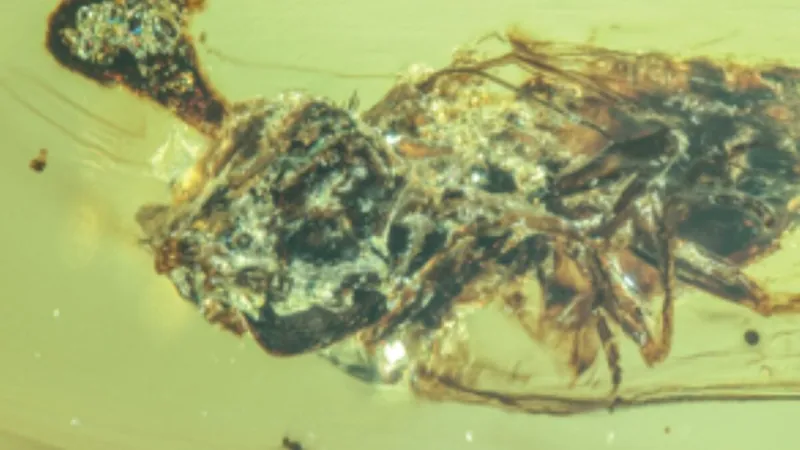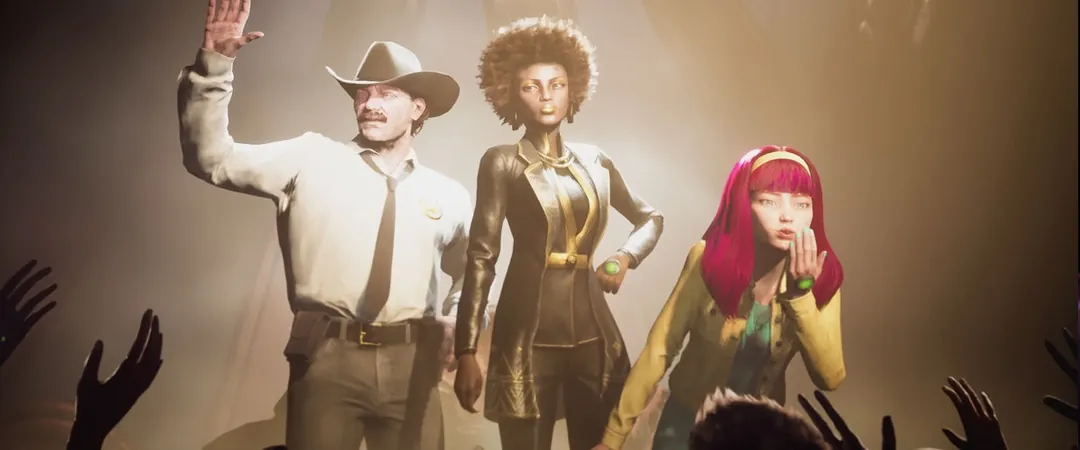
Unveiling Ancient Zombie Fungus: Cretaceous Era Insects Trapped in Amber
2025-06-26
Author: Sarah
Ancient Fungi Meets Modern Paranoia
In a chilling echo of the video game sensation 'The Last of Us,' where humanity grapples with a terrifying fungal infection turning people into zombies, reality has its own astonishing tale. Research reveals that parasitic fungi like the infamous cordyceps have been lurking since the age of dinosaurs.
A Fossilized Discovery: 99 Million Years Old
An international team, spearheaded by Yuhui Zhuang from Yunnan University, has unearthed two astonishingly preserved insects encased in 99-million-year-old amber from Myanmar. These specimens—a fly and an ant pupa—mark a groundbreaking discovery as they represent some of the oldest known fossils of animal-pathogenic fungi, dating back to the Cretaceous period.
The newly identified fungal species, dubbed Paleoophiocordyceps gerontoformicae and Paleoophiocordyceps ironomyiae, showcase the intricate dance between fungi and insects. Zhuang elaborated to CNN, stating, "These two fossils are extremely rare among the vast collection of amber specimens, as they highlight the symbiotic relationship between fungi and their insect hosts."
Unearthing the Past: Methodology and Findings
Using cutting-edge X-ray imaging, researchers meticulously examined these fossils, revealing unexpected insights into the nature of the infections. Both fungal species belong to the genus Ophiocordyceps—a notorious group known for commandeering the behavior of their hosts. In a sinister twist, the fungi manipulate their insect victims to seek out sunnier spots conducive for spore production.
In a striking display, the fossilized fly revealed P. ironomyiae emerging dramatically from its head, while the ant pupa showed the fungus bursting from a unique gland, previously undocumented in Ophiocordyceps species. This revelation underscores the potential discovery of two entirely new species.
Tracing the Fungus Family Tree
Through DNA analysis and phylogenetic models, researchers traced the evolutionary journey of Ophiocordyceps, suggesting its origins lie deep within the early Cretaceous period. Originally preying on beetles, these fungi underwent a remarkable transformation, later infecting butterflies, moths, and other insects, including bees and ants.
The explosive rise of various insect species during this epoch likely catalyzed the rapid evolution of new Ophiocordyceps species.
Conclusion: A Window into the Past
This discovery not only sheds light on the ancient interactions between fungi and insects but also serves as a reminder of nature's incredible complexity and its capacity to dethrone the living with unearthly strategies. As the tales of 'The Last of Us' might suggest, the real world holds stories just as gripping, lurking in the glossy amber of time.





 Brasil (PT)
Brasil (PT)
 Canada (EN)
Canada (EN)
 Chile (ES)
Chile (ES)
 Česko (CS)
Česko (CS)
 대한민국 (KO)
대한민국 (KO)
 España (ES)
España (ES)
 France (FR)
France (FR)
 Hong Kong (EN)
Hong Kong (EN)
 Italia (IT)
Italia (IT)
 日本 (JA)
日本 (JA)
 Magyarország (HU)
Magyarország (HU)
 Norge (NO)
Norge (NO)
 Polska (PL)
Polska (PL)
 Schweiz (DE)
Schweiz (DE)
 Singapore (EN)
Singapore (EN)
 Sverige (SV)
Sverige (SV)
 Suomi (FI)
Suomi (FI)
 Türkiye (TR)
Türkiye (TR)
 الإمارات العربية المتحدة (AR)
الإمارات العربية المتحدة (AR)